Esthetic dentistry for tots, teens
Fig. 1: T-bands with wooden wedge (Note: Isolite mouthprop is used.)
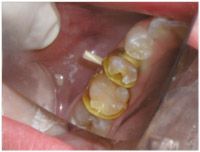
Fig. 1: T-bands with wooden wedge (Note: Isolite mouthprop is used.)
Today’s parents are concerned about esthetics for their children. Esthetic dentistry can provide the beautiful smile that parents and their children desire. It is important for our young patients to look and feel good.
We have all experienced the wonderful smile of a patient when we have turned the “ugly duckling into a beautiful swan”.
We are fortunate to have the dental materials and devices that allow us the opportunity to provide esthetic dentistry. Some of the techniques and materials we have available for our teenage patients’ smile creations include: porcelain veneers, direct composite veneers, microabrasion, bleaching, orthodontics (including clear braces and aligners), direct and indirect composite restorations, implants, and porcelain crowns.
Options are out there
Many dentists feel that it is preferable to place an amalgam restoration due to speed and longevity.

Fig. 2: Omni Matrix (Ultradent Corp.)
Yet plenty of pediatric and general dentists, including myself, have been using composite materials for Class II restorations for decades and I am very pleased to be able to offer a “tooth-colored” vs. a “silver” restoration. With the modern adhesive materials we have available today, one can place a Class II composite, glass ionomer, or resin modified glass ionomer restoration that will provide years of service and are very easy to use. The resulting restorations will have excellent function and form and, of course, improved esthetics.
When restoring Class II adhesive restorations in children, teenagers, and adults, the goal is to provide: 1. tight contacts; 2. good contours; and 3. proper anatomy. Additionally, you want to provide comfort for the patient during the procedure and you want the matrices to be easy to place and remove.
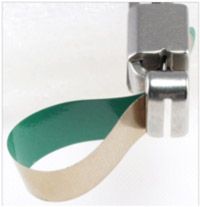
Fig. 3: Slick Bands (Garrison Dental Solutions)
There are many types of matrices on the market. The purpose of this article is to discuss the advantages and disadvantages of the various types of matrices available.
T-bands
The T-bands come in a variety of materials and thicknesses, and widths. The 0.001” brass matrix is available in narrow, wide, curved and straight forms. I suggest the 0.001” straight narrow brass matrix for cuspids (Class III restorations), primary molars, and bicuspids; the wide matrix for permanent molars (Fig. 1).
The advantages of T-bands is the cost of the disposable band and the ease of use. The disadvantage of T-bands is the difficulty in getting excellent contours and contacts.
Tofflemeir matrix
The Tofflemeir matrix has been manufactured as a disposable system (Ultradent’s Omni™), and Ultradent has provided us with a good selection of both pediatric and adult size Omni™ matrices in both metal and celluloid material (Fig. 2). Several manufacturers are making the matrix bands for Tofflemeir retainers in non-stick and color-coded matrices, including Garrison Dental Solutions (Fig. 3).
Segmental Matrix

Fig. 4: Matrix forceps seating matrices
The sequence of placing the segmental matrix is as follows: place the individual matrix one at a time; placement of the wedge, placement of the matrix ring. Fig. 4A illustrates the use of a matrix forceps (Composi-tight Matrix Forceps™, Garrison Dental Solutions) which allows for easy handling by the dental assistant and operator. Figs. 4B and 4C show multiple segmental matrices in both primary and permanent Class II restorations.
There are several styles available from various manufacturers. One company now offers a non-stick segmental matrix (Fig. 4) and color-coded matrices corresponding to the various shapes available (Fig. 5). Fig. 6 shows the Ultradent™ matrix system.
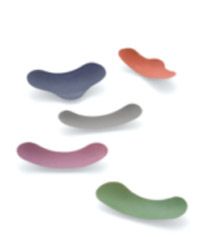
Fig. 5: Garrison's Slick Bands
The segmental matrix, when used with a wedge and separation rings, gives tighter proximal contacts in permanent Class II restorations than any other matrix system I have used.Also, I recently discovered another advantage. Many of our teenage and adult patients are undergoing orthodontic treatment and therefore may have bands, brackets, and archwires in place when a Class II restoration may be needed. With a segmental matrix, the operator does not have to remove the wires and or bands and brackets, but can utilize the segmental matrix to provide the required contour and proximal contacts (Fig. 7).
Garrison Dental Solutions has newer 3D-Rings that can be used for permanent teeth, however due to their shape the author prefers the Gold or Grey rings for primary molars. The Soft Face 3-D ring (orange) is more difficult for primary molars and around orthodontic appliances.
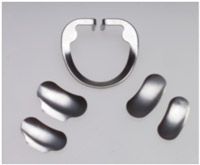
Fig. 6: Ultradent Matrix System
In these cases, the Composi-Tight Gold or Grey thin tine G-Rings are indicated. These matrices are ultra-thin and dead soft which allows for easy contouring after the matrix is placed.
According to Loomans, B.A., et al; “The use of sectional matrices combined with separation rings resulted in tighter proximal contacts compared to when circumferential systems were used.” I have found this to be true in both primary and permanent teeth when restoring Class II resin composite, compomer, resin modified glass ionomers, and glass ionomer materials.
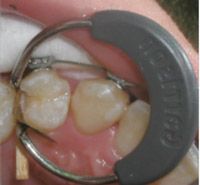
Fig. 7: Composi-tight matrix on orthodontic patient
Conclusion
There are a variety of types of matrix bands for use in restoring Class II restorations in both the primary and permanent dentition, and some include advantages and disadvantages when compared to one another for use in different situations. Dentists must decide which system will provide well-contoured restorations with excellent interproximal contacts. Based on the current research available I have concluded that a segmental matrix provides tighter proximal contacts compared to circumferential matrix band systems.
ACTIVA BioACTIVE Bulk Flow Marks Pulpdent’s First Major Product Release in 4 Years
December 12th 2024Next-generation bulk-fill dental restorative raises the standard of care for bulk-fill procedures by providing natural remineralization support, while also overcoming current bulk-fill limitations.